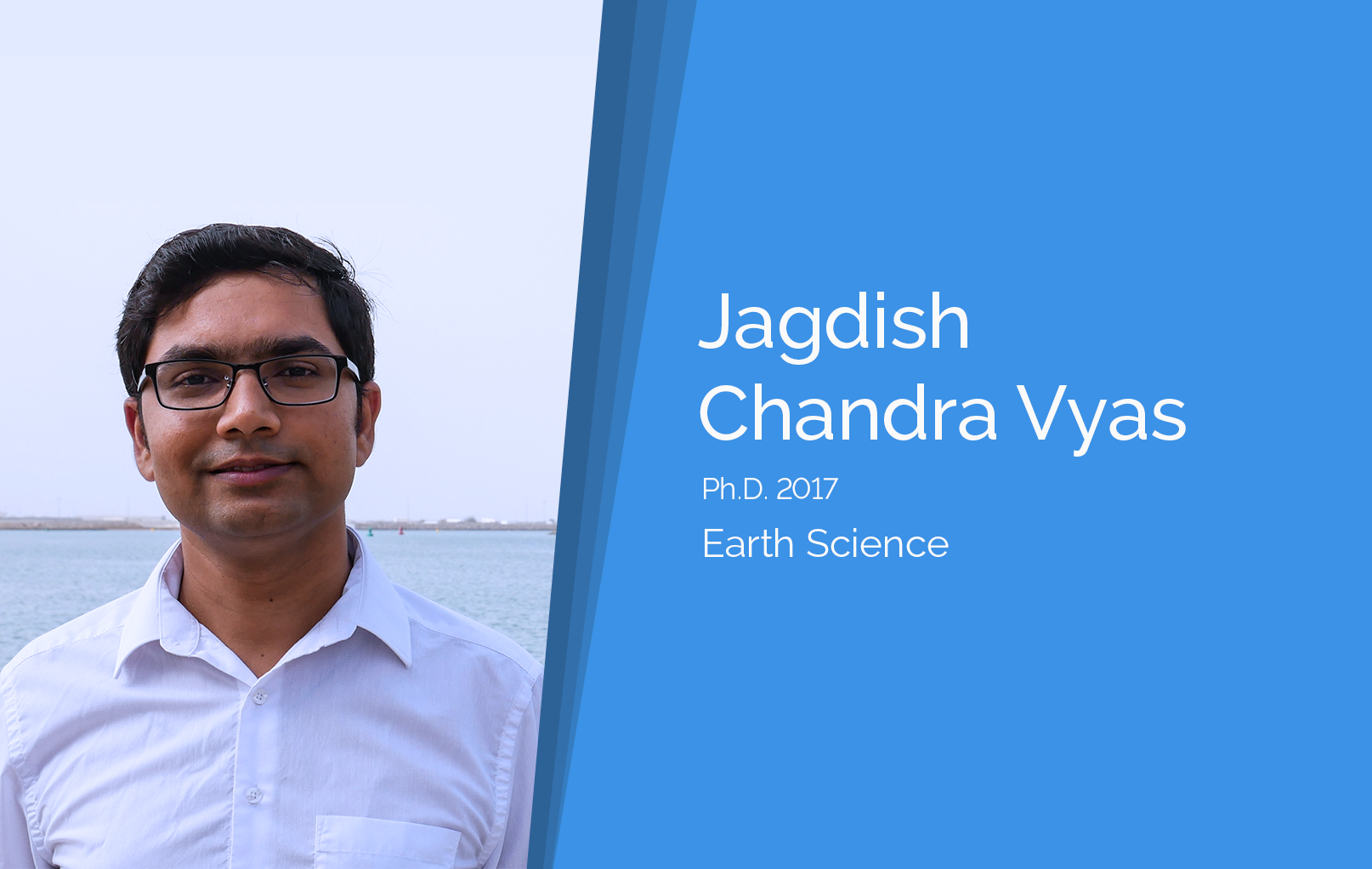KAUST alumnus Jagdish Chandra Vyas wins seismology poster award

- By Alison Rankin and David Murphy, KAUST News
KAUST alumnus Jagdish Chandra Vyas (Ph.D. '17) was awarded a 2017 Student Presentation Award at the Seismological Society of America Annual (SSA) Meeting. The meeting, which takes place every April, was held in Denver, Colorado, from April 17 to 21. The meeting covered the broad fields of earthquake science, geotechnical and earthquake engineering and seismology.
The SSA Board initiated the SSA Student Presentation Award to help identify outstanding work by SSA student members. The award, which is based on evaluation by the Student Award subcommittee, was given to 20 students whose presentations met the quality criteria for both content and presentation. Vyas' winning poster was entitled "Mach Wave Coherence in the Presence of Source and Medium Heterogeneity."
Understanding the effects of rupture complexity and heterogeneities
Vyas completed his Ph.D. in Earth Science and Engineering under the direction of Professor Martin Mai. His research has focused on analyzing the effects of rupture complexity and heterogeneities in Earth structure on near-source ground motions.
As a member of the Computational Earthquake Seismology (CES) research group, Vyas sought to better understand the effects of earthquake rupture propagation on ground-motion and its variability through numerical modeling. In particular, he analyzed the influence of the directivity effect, super-shear ruptures and medium scattering due to random heterogeneities present in the Earth's structure.
The CES group, which is based in the Physical Sciences and Engineering Division, conducts research to study earthquake source physics and ground-motion generation. The group focuses on gaining insight into earthquake properties as well as creating new tools for seismic-shaking estimation for earthquake-engineering applications.
Time at KAUST
Vyas is currently a postdoctoral scholar at the University of Canterbury, New Zealand, working with Professor Brendon Bradley on earthquake simulations and shaking predictions for earthquake scenarios in New Zealand.
When describing his time at KAUST, Vyas recalls the inspiring academic environment and the excellent facilities that provided him a place to nurture his innovative research. He feels that KAUST was not only a university for his graduate studies, but also a home where he grew scientifically and personally and where he matured from a student into an independent scientist.
Related stories:
- Ph.D. student Mohammad Shaqura chosen as finalist for IEEE Best Student Paper Award
- KAUST Ph.D. students Amal Hajjaj and Sherif Tella win best paper awards
- KAUST Ph.D. student Chuan Xia wins best poster award at ICMAT 2017
- Zahra Al-Saffar wins first prize for best student poster at EMBS 2017
- Ph.D. student Sofya Mudrova wins best biology poster award

